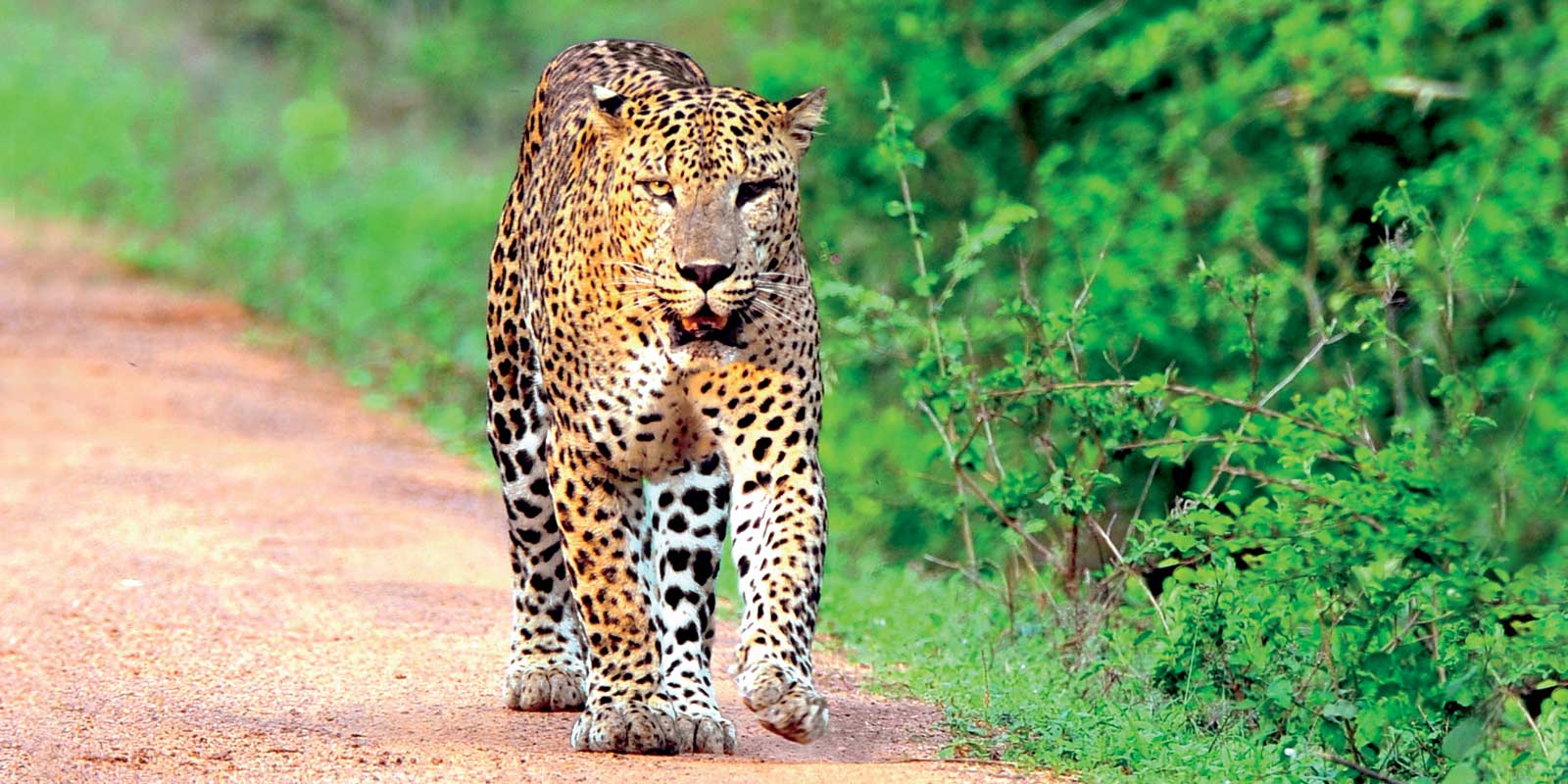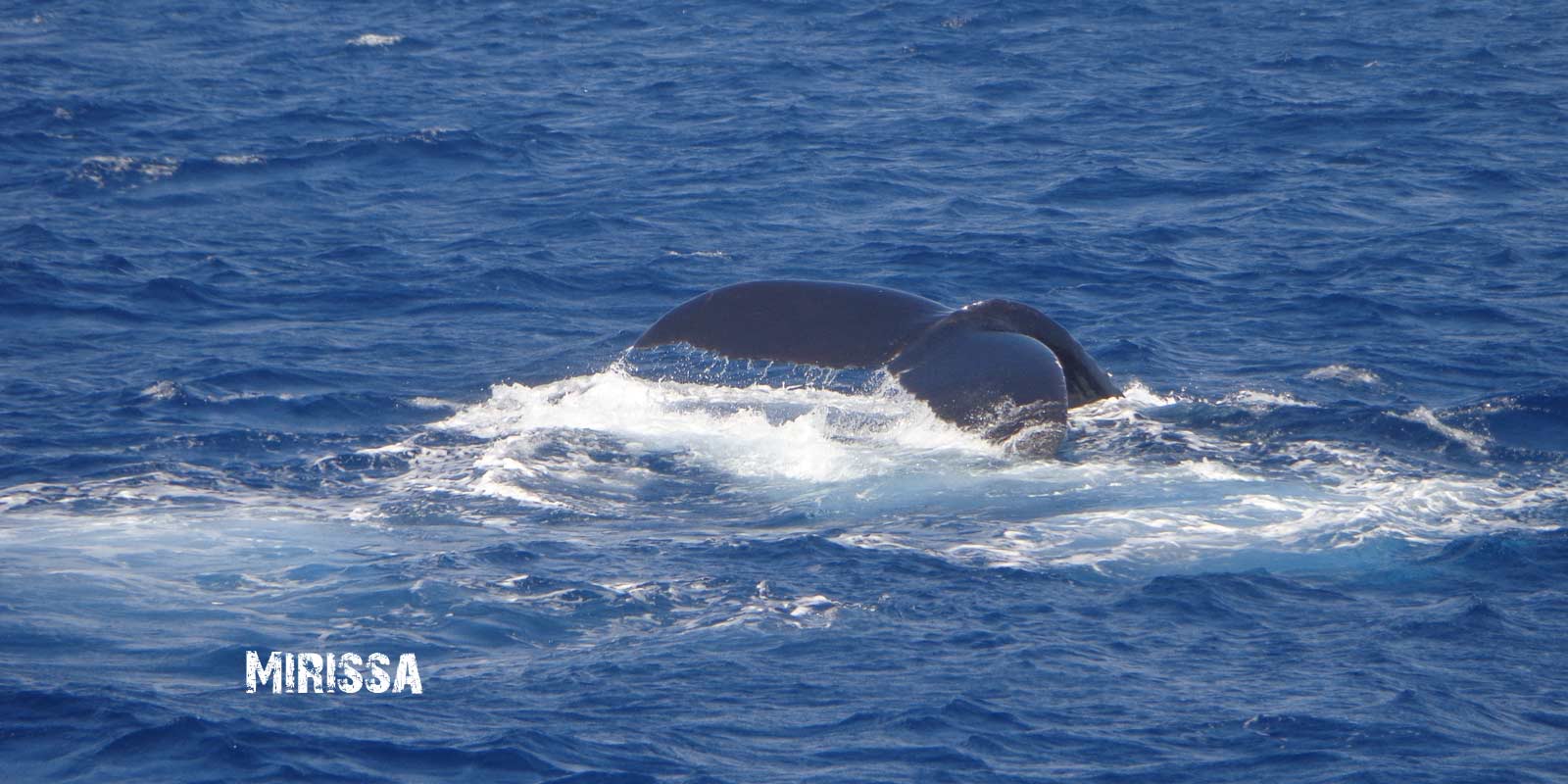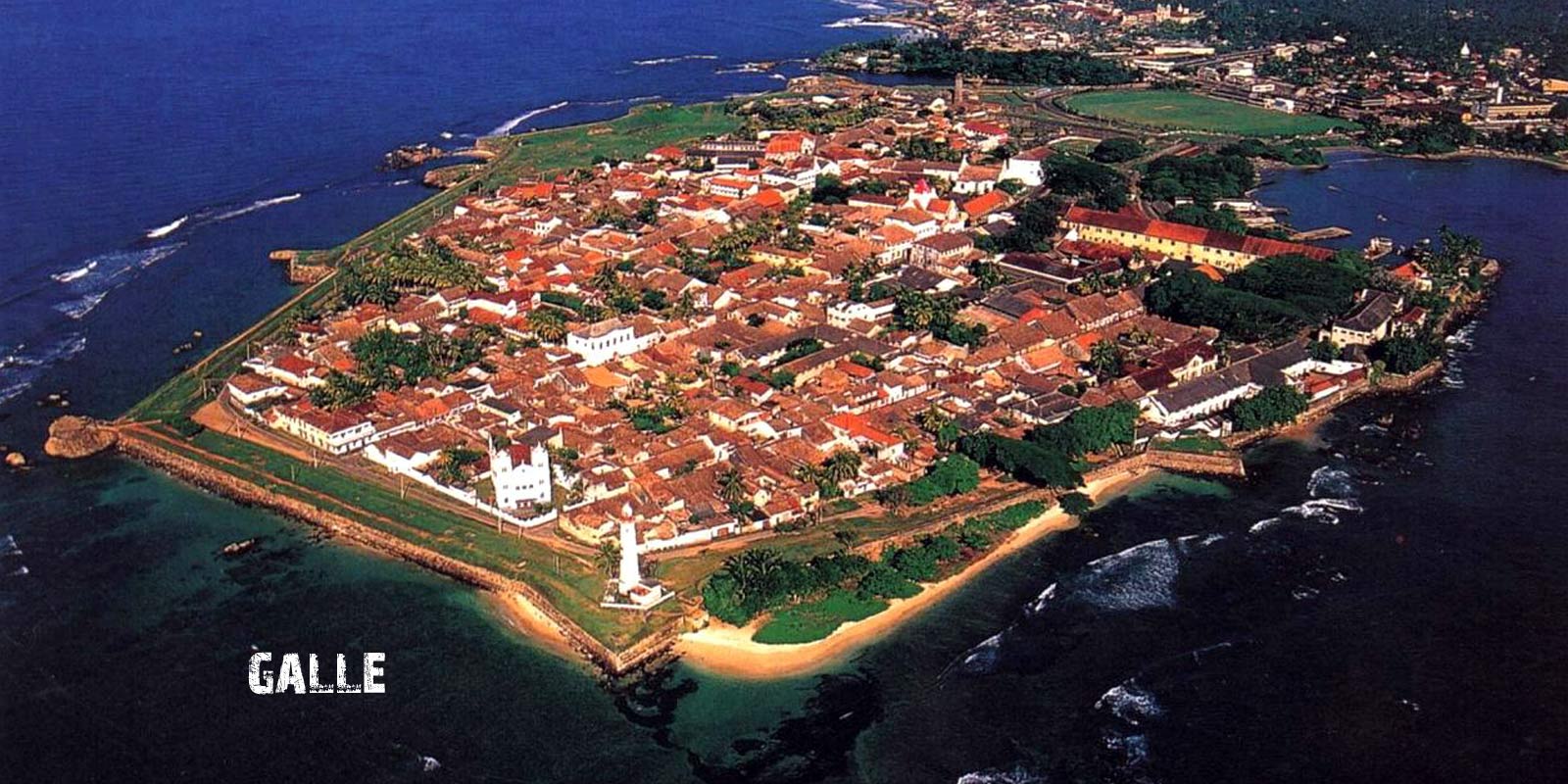
BEST 9 DAYS - MIX
• BEST - 9 Days MIX
Negombo, Pinnawala, Sigiriya, Dambulla, Kandy, Nuwara Eliya, Udawalawa, Yala National Park, Mirissa, Galle.
• NEGOMBO
Negombo is about 2 meters above sea level and Negombo's geography is a mix of land and water. The Dutch canal flows in the heart of the city of Negombo. The Negombo lagoon is one of the most scenic landmarks of Negombo. There are over 190 species of wildlife and plenty of birds in the mangroves of Negombo. The Northern border of the city is formed by the Ma Oya river which meets the Indian Ocean.
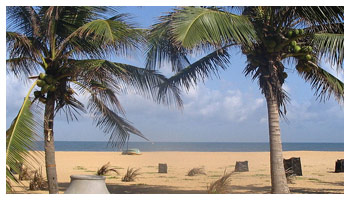
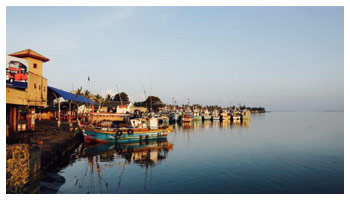
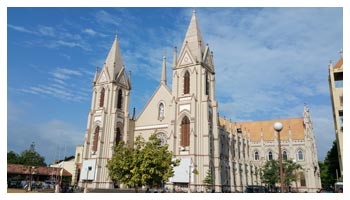
Just 7kms from the Bandaranaike International Airport, at the tip of the Negombo lagoon lies the busy Negombo beach. Lush coconut palms and mangroves run along the beach, while the age old catamarans, outrigger canoes, and the more modern trawlers gently bounce at sea. Negombo is a famous fishing village that is equally proud of its Dutch fort and other Dutch period architecture.
• PINNAWALA
Pinnawala Elephant Orphanage is an orphanage, nursery and captive breeding ground for wild Asian elephants located at Pinnawala village, 13 km (8.1 mi) northeast of Kegalle town in Sabaragamuwa Province of Sri Lanka. Pinnawala is notable for having the largest herd of captive elephants in the world. In 2011, there were 88 elephants, including 37 males and 51 females from 3 generations, living in Pinnawala. The orphanage was originally founded in order to afford care and protection to many of the orphaned unweaned wild elephants found wandering in and near the forests of Sri Lanka. It was established in 1975 by the Sri Lanka Department of Wildlife Conservation (DWC).
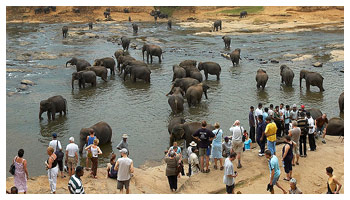
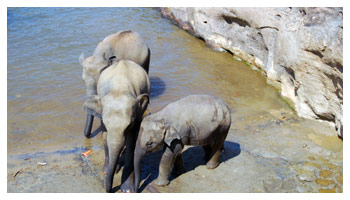
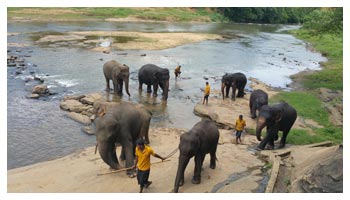
Pinnawala Elephant Orphanage is an orphanage, nursery and captive breeding ground for wild Asian elephants located at Pinnawala village, 13 km northeast of Kegalle town in Sri Lanka. Pinnawala is notable for having the largest herd of captive elephants in the world.
• SIGIRIYA
Sigiriya consists of an ancient citadel built by King Kashyapa during the 5th century. The Sigiriya site contains the ruins of an upper palace located on the flat top of the rock, a mid-level terrace that includes the Lion Gate and the mirror wall with its frescoes, the lower palaces located behind the lavish lower gardens, and moats and ramparts which protected the citadel. The site was both a palace and a fortress. The upper palace on the top of the rock includes cisterns cut into the rock. The moats and walls that surround the lower palace are exquisitely beautiful.
Sigiriya today is a UNESCO listed World Heritage Site. It is one of the best preserved examples of ancient urban planning. It is the most visited historic site in Sri Lanka.
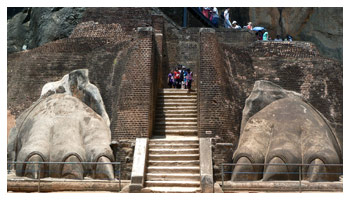
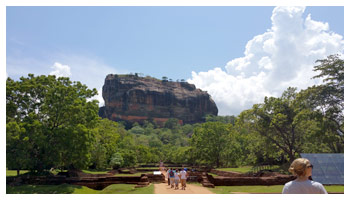
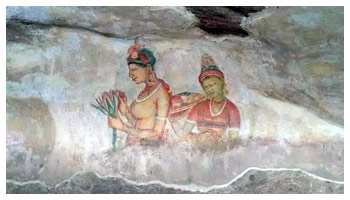
Sigiriya Rock Fortress and City built by an obsessed monarch in the 5th century, Sigiriya or Lion Rock is an astonishing feat of engineering and construction. The most striking portion of Sigiriya, a terracotta and grey core of rock set in the cultural heart of Sri Lanka, rises a sheer 200 meters above a forested plain, its flattened summit sloping gently. A series of moats, ramparts and water gardens — remnants of an ancient city — spread out on two sides of the rock, with the remains of a pair of giant stone lion’s paws still guarding the staircase that leads to the summit, once occupied by a royal palace. Designated a World Heritage Site by UNESCO in 1982, Sigiriya is Asia’s best preserved city of the first millennium, showing complex urban planning around the base of the rock, combined with sophisticated engineering and irrigation skills in the palace perched on the summit. It is considered it to be one of the oldest tourist attractions in the world with visitors recording their impressions in some of the earliest-known graffiti.
• DAMBULLA
Major attractions of the area include the largest and best preserved cave temple complex of Sri Lanka, and the Rangiri Dambulla International Stadium, famous for being built in just 167 days. The area also boasts the largest rose quartz mountain range in South Asia, and the Iron wood forest, or Na Uyana Aranya.
It is the largest and best preserved cave temple complex in Sri Lanka. The rock towers 160 m (520 ft) over the surrounding plains.There are more than 80 documented caves in the surrounding. Major attractions are spread over 5 caves, which contain statues and paintings. This paintings and statues are related to Lord Buddha and his life. There are a total of 153 Buddha statues, 3 statues of Sri Lankan kings and 4 statues of god and goddess.
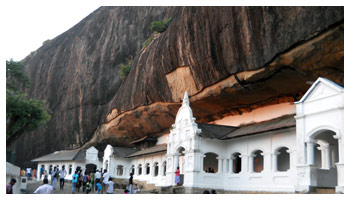
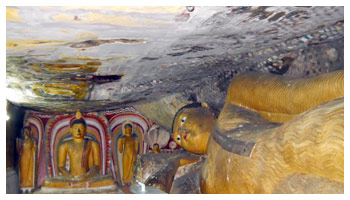
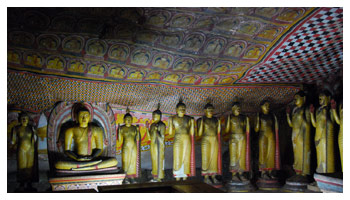
The Golden Temple of Dambulla is dating back to the First Century BC, the Golden Temple of Dambulla has been the centre of pilgrimage for Buddhists and Hindus alike for 22 centuries. It is Sri Lanka’s most popular historic site. The Cave monastery, home to Buddhist monks is covered with exquisite 2,000 year-old murals depicting the life and times of the Lord Buddha. The shrines also house a collection of 157 statues of Buddha in various sizes and poses, including a 15 meter long reclining Buddha and vividly colored frescoes on the walls and ceiling, making this the largest antique painted surface in the world. To reach Dambulla’s rock temples, pilgrims and tourists alike must climb barefoot up the sloping ground and several series of stairs almost to the summit, 100 meters above the plain and The five caves or shrine rooms of Dambulla lie just ahead. All of these house multiple images of the Lord Buddha, either lying, standing or seated. The astonishing frescoes and the sheer size and antiquity of the caves convinced UNESCO that Dambulla should be preserved as a World Heritage Site.
• KANDY
Kandy (Sinhalese: Maha nuwara, pronounced [mahaˈnuʋərə]) is a major city in Sri Lanka, located in the Central Province, Sri Lanka. It is the second largest city in the country after Colombo. It was the last capital of the ancient kings' era of Sri Lanka. The city lies in the midst of hills in the Kandy plateau, which crosses an area of tropical plantations, mainly tea. Kandy is both an administrative and religious city and is also the capital of the Central Province. Kandy is the home of The Temple of the Tooth Relic (Sri Dalada Maligawa), one of the most sacred places of worship in the Buddhist world. It was declared a world heritage site by UNESCO in 1988.
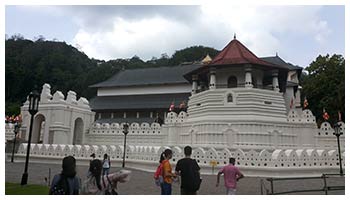
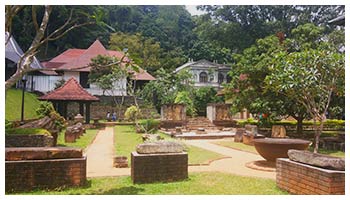
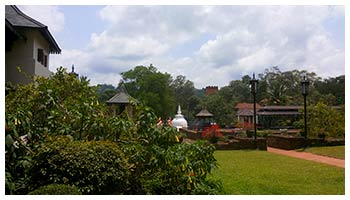
The sacred Temple of the Tooth in the historic city of Kandy houses one of Buddhism’s most sacred relics and draws followers of the Buddhist faith from all over the world. The Royal Complex situated around the Temple of the Tooth and Kandy Lake – comprising of the King’s Palace, the Queens Palace, the Audience Hall, the Royal Boathouse and the Royal Summer House, represent the zenith of ancient Sri Lankan architecture.
In the hills around Kandy, many temples feature the distinctive architecture, murals and carving of the late-medieval period. These include two 14th century temples: the beautiful hilltop Lankatilleke and Gadaladeniya, its wooden doors still bearing the original paintings.
• UDAWALAWA
Uda Walawe National Park is the third most visited National Park in the island, Udawalawe is a myriad of interesting flora and fauna due to the presence of the Udawalawe reservoir on the Walawe River, the surrounding marshes, forests and grasslands. Another important habitat for the elephant (a herd of about 250 is believed to be permanently resident) and a recorded number of 12 amphibian species, 21 species of fish, 33 reptiles, 184 species of birds and 43 mammals.
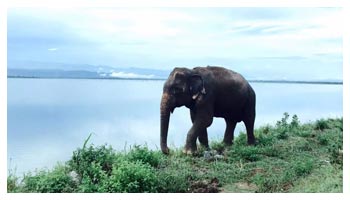
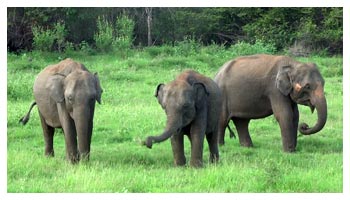
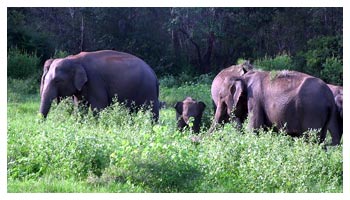
• NUWARA ELIYA
Minneriya National Park is a national park in North Central Province of Sri Lanka. The area was designated as a national park on 12 August 1997, having been originally declared as a wildlife sanctuary in 1938.[1] The reason for declaring the area as protected is to protect the catchment of Minneriya tank and the wildlife of the surrounding area. The tank is of historical importance, having been built by King Mahasen in third century AD. The park is a dry season feeding ground for the elephant population dwelling in forests of Matale, Polonnaruwa, and Trincomalee districts. The park earned revenue of Rs. 10.7 millions in the six months ending in August 2009. Along with Kaudulla and Girithale, Minneriya forms one of the 70 Important Bird Areas (IBAs) of Sri Lanka. The park is situated 182 kilometres (113 mi) from Colombo.
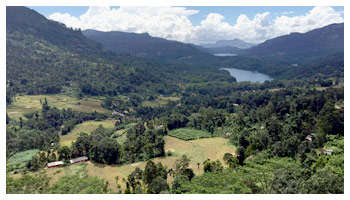
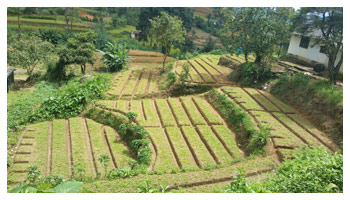
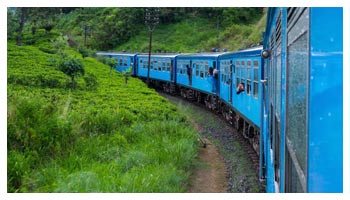
Nuwara Eliya (City of Lights) is a resort city in the Central Mountain Range of Sri Lanka. Blessed with salubrious climate, breathtaking views of valleys, meadows, mountains and greenery; it’s hard to imagine that Nuwara Eliya is only 180 Km from the hot and humid Colombo. Nuwara Eliya, also known as ‘Little’ England’, was the favorite hill station of the British who tried to create the resort into a typical English Village. The old brick Post office, country house like hill club, with its hunting pictures, mounted hunting trophies and fish, and it’s strict formal dinner attire; the 18 hole golf course, race course etc., evoke nostalgia of Colonial British Ceylon and Lake Gregory, Tea Plantation, Waterfalls and Hagala Botanical Gardens are few among other attractions around the hill topic.
• YALA NATIONAL PARK
Yala National Park is the most visited and second largest national park in Sri Lanka. The park consists of five blocks, two of which are now open to the public, and also adjoining parks. The blocks have individual names such as, Ruhuna National Park (block 1) and Kumana National Park or 'Yala East' for the adjoining area. It is situated in the southeast region of the country, and lies in Southern Province and Uva Province. The park covers 979 square kilometres (378 sq mi) and is located about 300 kilometres (190 mi) from Colombo. Yala was designated as a wildlife sanctuary in 1900, and, along with Wilpattu was one of the first two national parks in Sri Lanka, having been designated in 1938. The park is best known for its variety of wild animals. It is important for the conservation of Sri Lankan elephants, Sri Lankan leopards and aquatic birds.
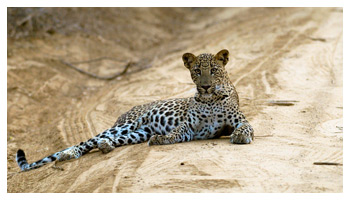
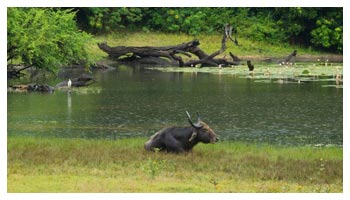
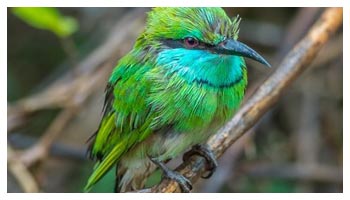
Yala National Park is the second largest national park in Sri Lanka, Yala is situated in the Southeast part of the island in the dry, semi-arid climate region, bordering the Indian Ocean. The number of mammals recorded at Yala is as high as 44 while it also boasts of one of the highest leopard densities in the world. None other than the majestic Sri Lankan elephant and the leopard, take pride of place at this amazing national park.
• MIRISSA
Mirissa (Sinhalese: මිරිස්ස) is a small town on the south coast of Sri Lanka, located in the Matara District of the Southern Province. It is approximately 240 kilometres (150 mi) south of Colombo and is situated at an elevation of 4 metres (13 ft) above the sea level. Mirissa's beach and night life make it a popular tourist destination. It is also a fishing port and one of the island's main whale and dolphin watching locations.
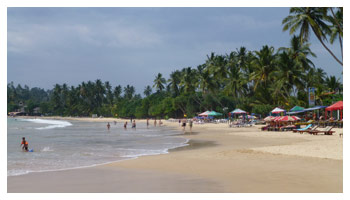
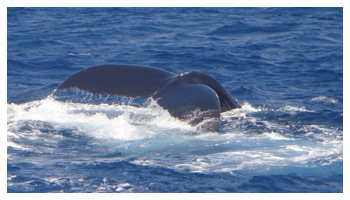
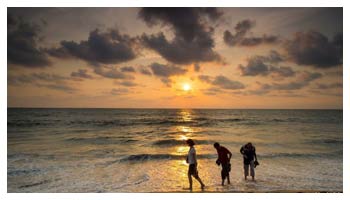
The whale watching season in Mirissa is in full swing by January every year with whales and dolphins parading their presence in the Sothern and North-Western oceans of Sri Lanka. Tourists can watch Blue whales, Bryde´s whales, Sperm whales, Fin whales, bottle nose dolphins, common dolphins and spinner dolphins grace the waters of Southern Seas of Sri Lanka from Weligama to Mirrissa and can be found within just eight to ten nautical miles from Mirissa harbor.
• GALLE
Galle is a major city in Sri Lanka, situated on the southwestern tip, 119 km from Colombo. Galle is the administrative capital of Southern Province, Sri Lanka and is the district capital of Galle District. Prominent landmarks in Galle include the city's natural harbor, the National Maritime Museum, St. Mary's Cathedral founded by Jesuit priests, one of the main Shiva temples on the island, and Amangalla the historic luxury hotel. On 26 December 2004 the city was devastated by the massive Tsunami caused by the 2004 Indian Ocean earthquake that occurred a thousand miles away, off the coast of Indonesia. Thousands were killed in the city alone. Galle is home to a cricket ground, the Galle International Stadium which is considered to be one of the most picturesque cricket grounds in the world
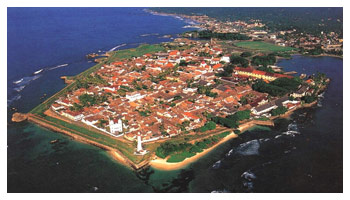
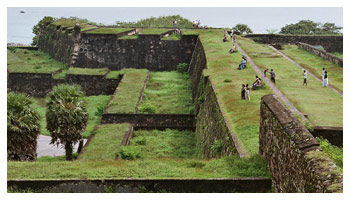
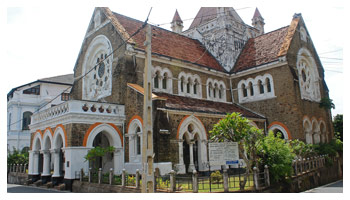
Dutch Fort at Galle, close to the island’s southernmost point, 173km from Colombo, has the distinction of being the best-preserved sea fort in South Asia. A living heritage site, this 90 hectare (222 acre) attraction is a superb blend of architecture, with fortifications that resemble those in the coastal areas of Portugal. The fall of Galle to the Dutch in 1640 saw its fortifications consolidated further along the lines of the fortified cities of Europe. The Dutch and the English colonial styles are evident in the deep verandahs of houses supported by timber or masonry pillars. Originally established by the Portuguese in the 16th Century, it reached its zenith under Dutch rule in the 18th Century, providing spacious housing, wide roads and all necessary facilities within its walls including an intricate sewage system that was ahead of its time. When it comes to fortified towns, nothing can compete with the Dutch Fort in Galle. This World Heritage Site on the south coast was the main port of call for ships sailing between the East and Europe.
